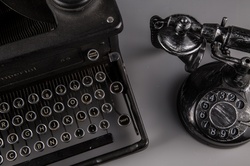Open Hardware: Raspberry Pi, FPGAs, and Binary Enigma
-
Raspberry Pi ☛ Can a Raspberry Pi Pico act as a GPU for gaming?
Clem from element14 was tasked with exploring the possibility of turning a Raspberry Pi Pico into a GPU capable of rendering super-smooth graphics in-game. Yes, you read that correctly — he’s not attempting it with our monster new Raspberry Pi 5, or even a 4; he’s giving our teeny tiny little Pico a shot.
-
Raspberry Pi ☛ Check which phase the moon was in on a special day with this desktop lunar display
The build features a keypad with LED displays for users to enter their date of choice. Information about the moon’s phase on the specified date is pulled by the Pico W from Astronomy API. A stepper motor spins a 3D printed “shadow” inside the moon model to simulate the correct phase.
-
Hackaday ☛ Weird Things To Do With FPGAs
There’s an old joke about how can you find the height of a building using a barometer. One of the punchlines is to drop the barometer from the roof and time how long it takes to hit the ground. We wonder if [Alexlao512] had that in mind when he wrote a post about unconventional uses of FPGAs. Granted, he isn’t dropping any of them off a roof, but still. The list takes advantage of things we usually try to avoid such as temperature variation, metastability, and the effects of propagation delays.
-
Hackaday ☛ A Binary Version Of The Engima Machine
The Enigma machine is the most well-known encryption tool used by German forces in World War II, mostly because it was so famously cracked by the Allies to great effect. Like many hackers, [christofer.jh] was intrigued by the design of the Enigma, and felt compelled to build a binary version of his own design.

